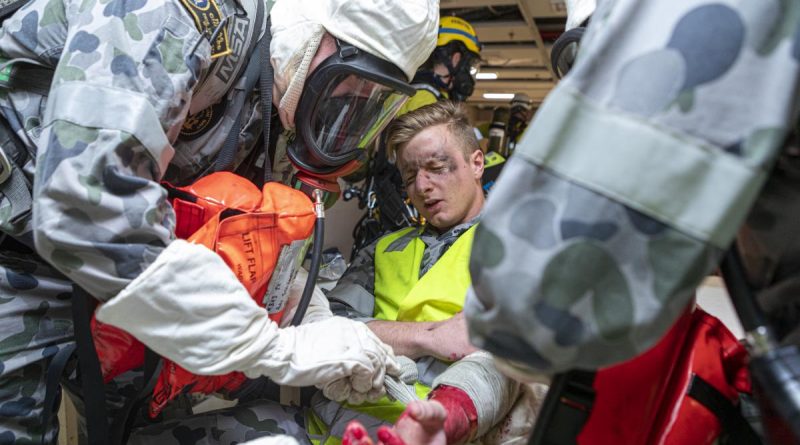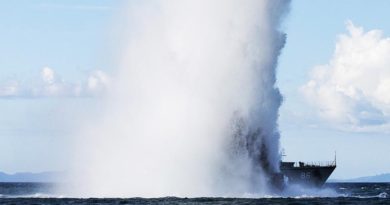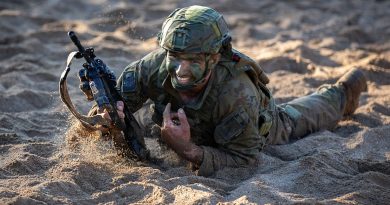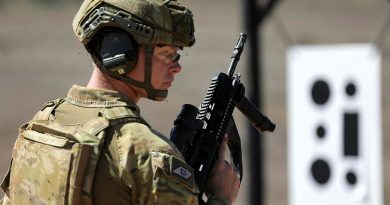Exercise tests response to electric shock victims in ships
Share the post "Exercise tests response to electric shock victims in ships"

Navy personnel at Fleet Base East joined forces with NSW Ambulance Service and Defence industry staff on May 31 to practise responding to an emergency electrical safety incident in a ship.
CAPTION: Navy personnel act as first responders during a simulated emergency on board HMAS Choules berthed at Fleet Base East in Sydney. Story by Lieutenant Max Logan. Photo by Able Seaman Benjamin Ricketts.
The exercise took place aboard HMAS Choules and was conducted as part of the wider Navy Electrical Safety Strategy, which is designed to implement measures that reduce the likelihood of an electrical safety incident.
The exercise consisted of a remote command post element and an onboard damage control exercise involving one fatality and two serious injuries.
In the fictitious scenario, first responders were thrown into action after a high-voltage arc flash injured contractors and members of the ship’s company, and partially disabled the ship, during an extended maintenance activity.
Director Maritime Safety Bureau Captain Matthew Shand said regular, scheduled training provided personnel with realistic learning scenarios and environments.
“With the potentially dangerous levels of electrical current generated aboard Navy warships comes risk,” Captain Shand said.
“This necessitates a requirement to work safely with electricity but also to train for any situation, which we have done during this exercise.
“So far in 2022, there have been 14 real-life electric shock incidents across the naval enterprise, which is too high.”

CAPTION: Navy personnel act as casualties and first responders work with NSW Ambulance paramedics during the exercise on board HMAS Choules. Photo by Able Seaman Benjamin Ricketts.
NSW Health Acting Zone Manager – Sydney, acting Superintendent Katherine Rallings, said the exercise provided NSW Ambulance Service staff a unique and valuable training opportunity.
“The response to casualties aboard HMAS Choules enabled NSW Ambulance paramedics to operate in a unique and dynamic environment,” acting Superintendent Rallings said.
“The ship presented challenges in the form of tight compartments, ladder bays and other hazards.
“All participants performed well together and, moving forward, our paramedics will have a firmer basis for responding to an incident of this nature.”
.
.

.
.
Share the post "Exercise tests response to electric shock victims in ships"





